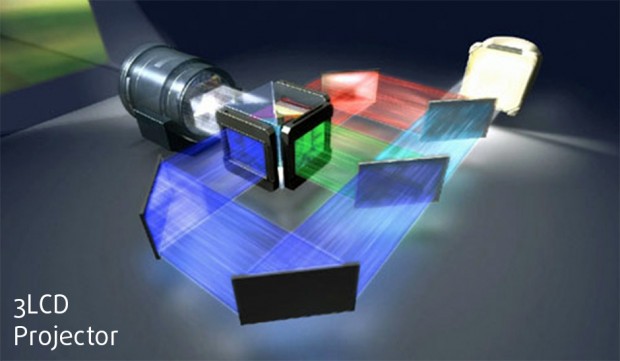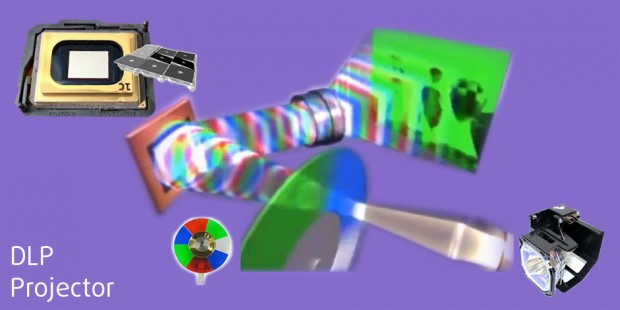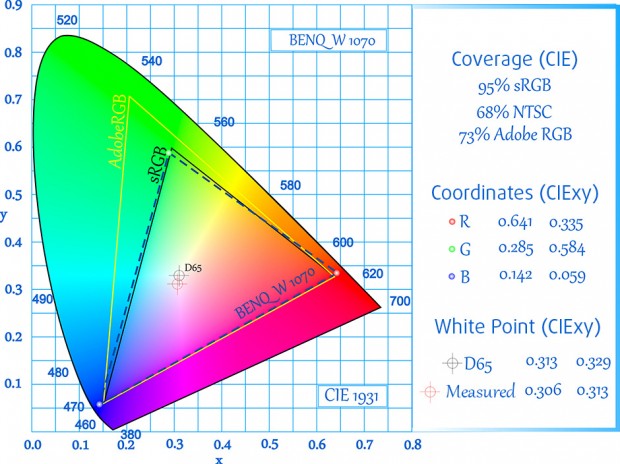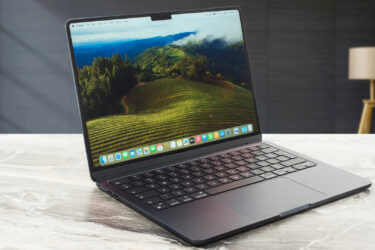BenQ W1070+ projector review – real cinema, but in our home
 In today’s review we will look at a product with increasing popularity, that not only brings the entertainment of cinema to our home, but could also be an alternative to our TV and monitor. As you can probably tell at this point, we are talking about the multimedia projector, whose representative in our first tests we chose to be the already familiar to users (with a considerable amount of sales) BenQ product – the W1070+ model.
In today’s review we will look at a product with increasing popularity, that not only brings the entertainment of cinema to our home, but could also be an alternative to our TV and monitor. As you can probably tell at this point, we are talking about the multimedia projector, whose representative in our first tests we chose to be the already familiar to users (with a considerable amount of sales) BenQ product – the W1070+ model.
What new features can the projector bring to the table in order to find a place in our daily lives, and are they enough to overthrow the large-format TVs and monitors, who at the moment are holding unyielding positions? Today’s agenda includes an attempt to shed some light on the discussion of whether a projector can be our main display device of choice or rather, just be supplemental to a main screen.
To begin with, we will briefly look at the principles on which modern projectors work, because that directly relates to their properties, analysis of test results and comparison with alternative devices.
Contents
3LCD
The first technology – 3LCD, has three monochrome matrices with liquid crystals in its basis, each of which releases a luminous flux in one of the three primary colors, obtained by directing and filtering the light from the lamp. The image is assembled by a system of prisms that mix the rays and transfer the already colored image on the screen through the lens. For now, 3LCD projectors are considered more suitable for watching movies than the single chip DLP. High color brightness is emphasized – later on, we will talk about color light output (CLO, which is a marketing term not supported by DLP device manufacturers), as well as the lack of the rainbow (arc) effect and the lower degrees of eye-strain in comparison to the next technology. On the other hand, due to the insufficient response time of the pixels, the interference of picture crossing in 3D mode with 3LCD panels is higher.
DLP
DLP technology (Digital Light Processing) is based on a matrix consisting of several million microscopic movable mirrors (measuring around 15 microns in some cases) pivotally connected to the chip, each of which actually represents one pixel. At a rate of 10 000 times per second, the mirrors switch between two positions: ON – they send the light from the lamp to the lens and OFF – when they redirect it to an absorber. Regarding the last one, projectors working this way have excellent contrast levels. As a result from the repeated shifting of the mirrors, different shades of gray are created and in its various levels (up to 1024, assuring very good distribution of brightness levels, as we are going to find out further in the review) depend on the ratio of time spent in these two positions.
The color is added with the help of a spinning wheel, represented by a set of filters in the three primary colors, or in some cases the additional yellow, cyan, magenta, used to increase the quality of the image, and a transparent sector to increase the brightness. The latter can also be used for synchronization of the electronic shutter on some 3D glasses (the system is suitable for three-dimensional projections). The light emitted by the lamp passes through the rotating filters, and the image created by the DLP-chip is guided to the lens. At any moment of time, only one color is displayed, but the wheel is spinning so quickly that our brain perceives only the end-composite result (multi-chip DPL projectors also exist, but they are very expensive).
LCOS
The LCOS (Liquid Crystal on Silicon) projector is a symbiosis of the two technologies described above. It uses liquid crystals as the first one, but they don’t regulate the passage of light. Instead, direct its reflection, acting like mirrors, as in DLP. The projectors based on this technology have higher resolution, but generally cost more. The advantages of DLP technology (as a result of the small distance between the mirrors), in terms of pixel differentiation, are even easier to spot in LCOS due to the rounded edges of the liquid crystals, assuring a very smooth, analog type image.
3LCD VS DLP
Before we move on to BenQ W1070+, based on the DLP technology, it would be appropriate to say a few words, principally describing the advantages and disadvantages of a possible comparison between two devices using 3LCD and DLP.
The one-by-one color transition in DLP projectors leads to a loss of brightness in comparison to 3LCD ones, because at any given moment of time, two unnecessary colors are discarded. Therefore, the transparent sector is added to the filters wheel, but increasing the brightness this way decreases image quality. In the review of BenQ W1070+ today, the brightness problem (the correct term is luminous flux, we use the word “brightness” since it seems more accessible) is solved without the need of a segment for white light; its RGB segments are doubled (6 in total, placed on a 6-segment RGBRGB type wheel ), which helps lower the rainbow (arc) effect (another flaw typical of DLP, where the contours are blurred in an arc), arising from the consistent projection of colors and occurs if there are dynamic scenes or fast rotation of the eyes. The advantage in this case is, as we mentioned before, that the types of color filters can be more than three, with different segments width for more accurate colors.
When it comes to contrast, however, the matrix using reflection (DLP) is better than the transition one (3LCD).
Due to the efficient use of the lamp’s light, the 3LCD projector is generally more economic than the DLP one, which might not matter for some users. On the horizon, however, shines a new light, coming from powerful LEDs. The benefit of replacing conventional lamps goes beyond simply improved energy efficiency comparable within a predictable, albeit sufficiently long period of operation. It also goes to the cost of the device itself. The lifespan of the LEDs allows for a long enough replacement period, so that when the time comes, that will be the least of your worries. For example – five hours of daily movie watching for twenty years is a prediction for a 2014 projector. Dimensions and weight will decrease. Pocket projectors began to pop up on the market, as well as laptops and tablets with embedded projectors for presentations, meetings with friends or romantic dinners during a journey. The drastic decrease in released heat and fan noise are not just a bonus – the projector can be left on like a TV, without any strict monitoring, and in the home theater room the sound will come only form the speakers.
CLO
And lastly, a few words about the so-called color brightness – color light output (CLO).
We turned BenQ W1070+ on and measured the brightness of the screen in nine points (with an luminance meter on a “white” backlit screen) but we won’t be publishing these results for now, because we must first prepare a special room that absorbs reflections and assures for properly controlled conditions when measuring each product. Calculated to the area of the screen, the measured brightness corresponds to a light flux of 1500 lumens. This proves that the data given by the manufacturer about BenQ W1070+ is accurate, and the projector is capable of working this way not only in the dark, but also in well lit rooms (we have prepared a photo below). And now it is time for color brightness, not used for black and white images comparison here, but rather, for color ones. We know that the three primary colors form white. While the measured brightness was on a “white” screen, the color brightness is received after the measurement and aggregation of the red, blue and green brightness. This way the manufacturers of 3LCD projectors claim that only their product’s white color brightness is equal to the sum of the three primary ones and their units give up to three times brighter colors when compared to their competitors – DLP, displaying advertisement images like the one below.
Their opponents, however, say that the 3LCD technology works only with three colors, while they can add filters with additional ones (“for brilliant colors”), although full-spectrum light is currently only provided by the sun.
From here on out this matter is beyond the scope of the article, and it’s also better to possibly have a comparative analysis of a merged screen between two competing models based on opposing principles.
At any rate, in the conclusion of this section we would like to remind you that the the human eye naturally works with reflected light, rather than direct emissions (like monitors and TVs, regardless of whether they are based on LEDs, fluorescent lamps or self-luminous organic matrices). And when it comes to viewing angles – the difference to mainstream monitors is unmatched.
What’s in the box of BenQ W1070+
In the box of BenQ W1070+ you will find the necessary cables, two 10-watt charing devices with 5V nominal output voltage and 2A current, brackets for optional support of the transmitter and receiver to the projector, and the signal-emitting device, remote control and additional infrared receivers for seamless connectivity from all directions. This way there is no need for cabling, for example when mounting it to the ceiling, if the power cord is pulled from a suitable junction box and it is embedded into the wall, the area around the projector will be completely clean.
Appearance and introduction to BenQ W1070+
Out of its box, the projector stands in front of us in a white, remarkably shiny hull with soft shades and silver accents, whose elegant lines are intertwined in a stylishly shaped vent fins and a loudspeaker, whose area fits the overall design perfectly.
Brief video introduction
General characteristics and description
The base characteristics of BenQ W1070+ are: DLP technology for image forming, 1980×1080 Full HD resolution, luminous flux capped at 2200 lumens, lamp life 3500/5000/6000 hours (normal/ economic/ SmartEco modes), short throw zoom lens with 1.3 times zoom, focus distance from 16.88 to 21.88 mm and corresponding relative aperture from 1:2.59 to 1:2.87, with vertical displacement capability (the projector can turn the image).
Put in simpler words: finest detail for watching TV, bright light emitted from the lens and on top of that, long lifespan of the lamp, screening a large-format image from short distance with sufficient freedom for the location of the projector, including its attachment to the ceiling.
BenQ W1070+’s short throw lens can visualize an image with a large diagonal, almost equal to the distance of the projector to the screen, from a short range (a small drawback is the low zoom ratio). This way for instance, a two meter wide projected image is achieved by placing the projector at a distance no lower than 230 cm and not higher than 300 cm from the screen. All the other values can be calculated using a correlation (for example: screen width of four meters – at 460 to 600 cm from the projector to the screen).
On the back of the chassis, BenQW1070+ has two HDMI, one USB and one VGA ports, RGB component video connection, audio input and output. See below for a complete chart.
The connection in our case was managed by a transmitter and receiver set that BenQ optionally offers. This set allows for 2D and 3D (up to thirty meters) data to be transmitted from your source to the projector with the option for an external monitor.
The vertical lens shift can be activated using a screwdriver (or a coin) and it is hidden under a small flap. It is useful if the projector needs to be lifted a bit or after ceiling installation.
Specs sheet

| Technology | DLP |
|---|---|
| Resolution | 1920×1080 |
| Luminous flux | 2200 lumens |
| Lamp’s life | 3500 hours / 5000 / 6000 (normal/economic mode/mode SmartEco) |
| Contrast | 10000:1 |
| Aspect ratio | 16:9 |
| Interface |
|
| Noise while working | 31 / 28 dBA (depending on the mode) |
| Weight | 2.75 kg |
| Warranty | 3 year warranty |
Tests
The projector works in the following picture modes: “Standard”, “Cinema”, “Bright”, as well as two custom presets aptly named “User1” “User2”.
*All further measurements were done in ‘Standard” mode.
To do a comparison, we placed the projector at a distance at which the projected image has a 55-inch diagonal, which is small for home cinema, but close to a big screen TV. The calibrator-measured brightness of the reflected image on the screen (depending on the luminous flux, the area, and the screen’s reflective ability) on a 55-inch diagonal and luminous flux of 1500 lumens was 500 cd/m2 – twice the necessary brightness needed in a lit room. The result is unmatched by most modern displays, and let’s not forget, most of them don’t have 55 inch diagonals! When measuring in a darkened room with declared contrast (10000:1), the available light left an indication for the calibrator of over 2000:1 on said screen – a high value, which we would have a hard time measuring on an ordinary monitor (unlike with the monitor, however, in a bright room the contrast falls dramatically – this stands in favor of the argument that for maximum enjoyment, projectors should only be used in the dark).

We tested the image with two calibrator models.
The pattern of the gamma curve showed very good brightness distribution levels.

sRGB color gamut coverage is 95%, comparable with a good monitor.
The accuracy of the shades of gray is very high; the color samples have a larger deviation, but we must not forget that in this case, they are conditional, reflecting how we might see the merging of consistently projected primary colors (RGB).

The image is pure and doesn’t suffer from geometric distortions or color spots.
The rainbow effect, that is typical for DLP technology, is difficult to notice with the BenQ W1070+.
BenQ W1070+ has a 10-watt speaker with strong and clear sound. And even though a built-in speaker would only be a temporary solution for home cinema, it is very useful when you have to move your projector for presentations or entertainment.
The noise from BenQ W1070+’s fan is noticeable, but its level is low and you forget about it soon. It resembles the inner unit of a quite tolerable air conditioner, perhaps the cause of a remark on part of certain customers, or during the very quiet scenes of a film screening in a quiet room.
The remote control is comfortable to use, and the keys light up when you press them to better facilitate usage in the dark.
After you turn off the projector, the cooling fan continues to work for about a minute and a half, after which it stops by giving us an audible warning signal.
And finally, we want to show you some pictures of a screen projected from a distance of 160 cm, corresponding to a 55-inch screen; the picture is taken with a 12-megapixel DSLR camera. The frames are cropped, but the colors are not tampered with.
The first frame is in direct sunlight and still image.
The second is taken under the same conditions, but in a darkened room.
Next, screening a video (in motion).
Conclusion
We consider that BenQ W1070+ successfully managed to defend its reputation, in its class. The device has excellent contrast, its luminous flux is bright enough to do a decent job in well lit room. The oscillation frequency doesn’t allow the rainbow effect to occur easily.
BenQ W1070+ has Full HD 3D compatibility, a feature that only a small number of projectors posses. W1070+ is free of the aforementioned picture interweaving between channels, when the information intended for one eye is passed to the other (a.k.a. crosstalk). Additionally, it is well-equipped to defeat its competitors, who are using 3LCD technology, which is said to be better in this respect. The device is worth its price, or in other words, if you’ve saved up money for a projector, they won’t go to waste if you buy a BenQ W1070+.
Flaws – the flickering can affect people with sensitive vision. The fan could be a little quieter. And last, but not least – the manufacturer forgot to put some 3D glasses in the box!
Pros
- High contrast
- Bright and accurate (in “Standard” mode) colors
- Plenty of options
- Vertical and horizontal keystone adjustment (2D Keystone Adjustment) plus possibility of vertical displacement of the image
- Full HD 3D compatibility
- 3D-projection without interweaving between channels (crosstalk)
- Highly reduced “rainbow” effect
- A device for wireless connection with its own remote control and high range (optional)
- Wide variety of ports
- Elegant appearance
- Glowing buttons on the remote control
- Built-in speaker with considerable power
- “SmartEco” function to dynamically control power consumption of the projector
- Excellent quality/ features/ price ratio
Cons
- Relatively loud fan
- Small range of vertical lens shift
































I will like to say two things here. First, 3LCD is used in most of the Epson projectors, now I see BenQ has also started to use the 3LCD technology, which is good.
Second, it is a DLP projector so picture quality would be good but at the same time the picture may have a little rainbow effect as well.